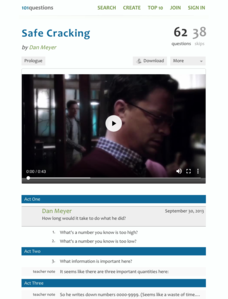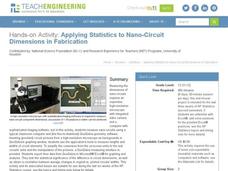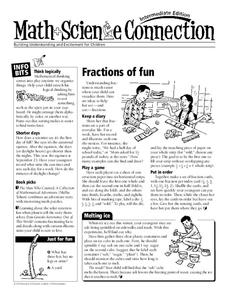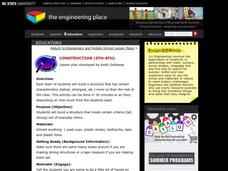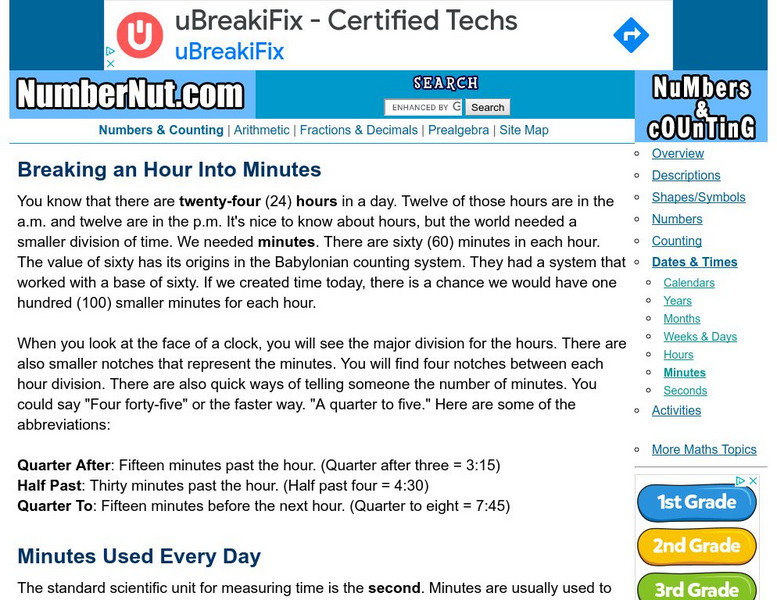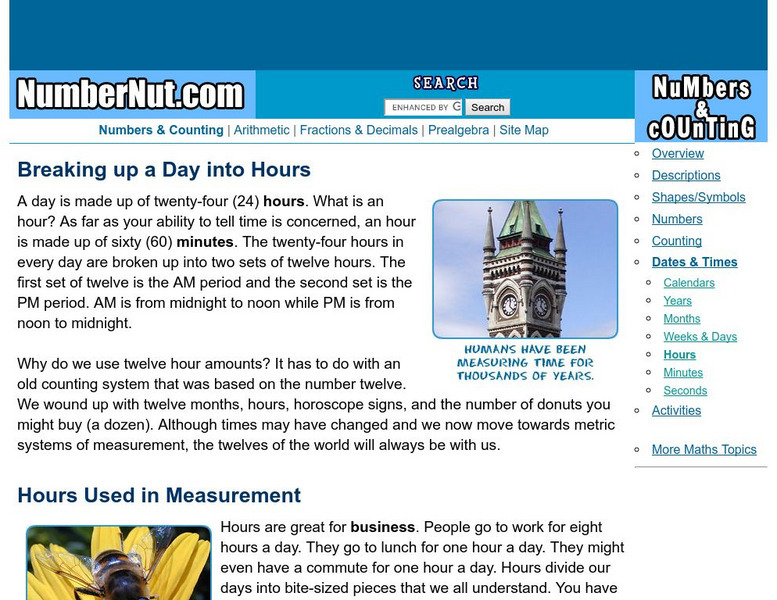Math Learning Center
Grade 2 Supplement Set D5 – Measurement: Telling Time
Have your class play concentration memory games using analog and digital clocks. Second graders become little experts with time telling to the minute, quarter, half, and hour. Use as a fun Friday treat as well as other...
Big Kid Science
Measuring Shadows Using an Ancient Method
How did ancient peoples determine the height of really tall objects? Young scientists and mathematicians explore the concept of using shadows to measure height in a hands-on experiment. Paired pupils measure shadows, then calculate the...
101 Questions
Safe Cracking
How long would it take to break into a safe by testing every possible combination of codes? Pupils view a video clip of this happening and must determine the total amount of time before success. They measure how long each step takes, add...
Teach Engineering
Applying Statistics to Nano-Circuit Dimensions in Fabrication
Do flexible circuits change dimensions during fabrication? Groups use GeoGebra software to measure the length of pictures of flexible nano-circuits. To determine if the circuits change dimensions, future engineers use Microsoft...
Teach Engineering
Building a Barometer
Forget your local meteorologist — build your own barometer and keep track of the weather with an activity that provides directions to build a barometer out of a narrow necked bottle, a glass, and some water. Using their barometer,...
Curated OER
Minutes and Days
Elapsed time is a skill developed by the single question that is the center of this activity. Fifth graders are asked to find out the time that is 2011 minutes after the beginning of 2011. This question addresses the standard that...
Resources for Educators
Fractions of Fun
Reinforce concepts and encourage learner engagement with a collection of math games, science experiments, and cross curricular activities. In one fun resource, learners sort objects, keep a diary of everyday fractions, play a game using...
Census at School
Just How Old Are You?
Do you know how old you are in seconds, minutes, days, weeks, or months? This intriguing question is presented as a way for learners to estimate in units of time. They'll build a better sense of what each increment of time is as they...
North Carolina State University
Construction
Engineering design projects serve as great opportunities for collaborative problem solving. For this case, students work in small groups designing, building, and eventually testing a structure that meets a teacher-specified objective. It...
Teach Engineering
Creepy Silly Putty
It might be silly to determine the creep rate of putty but groups will enjoy making different formulations of silly putty and playing with them to understand how the different mixtures behave. The second part of the activity has groups...
PBS
Twirling in the Breeze
Blow classes away with a hands-on lesson investigating wind speed. Learners use common materials to design and construct anemometers. They then test their anemometers and collect data on the wind speed created by a fan.
Star Date
Shadow Play
Three activities make up a solar system lesson that features the sun, its light, and the shadows it produces. Scholars step outside to discover the changes shadows make at different times of day, take part in a demonstration of...
Bethel School District
Health Triangle Self Assessment
Measure health as a triangle, with each side representing different aspects of health: physical, emotional/mental, and social. High schoolers complete a self-assessment of their health in all three areas before scoring their progress and...
Curated OER
Water Down the Drain
Did you know that leaky faucets waste $10 million worth of water? Conservationists perform an experiment and draw best-fit lines to explore how the US Geological Society determined this value.
Teach Engineering
Scale Model Project
Try your hand at scale models. Scholars create a scale model of an object using a scale factor of their choice. As part of the project, they give presentations on their processes and calculations. This is the last installment of the...
Illustrative Mathematics
Converting Fractions of a Unit into a Smaller Unit
There is more than one way to answer a question; especially when you have fractions in measurement. Here are three questions with real-world situations in which 5th graders are asked to provide answers in three ways: a larger unit of...
Curated OER
Extending the Definitions of Exponents, Variation 2
Introduce the concept of exponential functions with an activity that extends the definition of exponents to include rational values. Start with a doubling function at integer values of time, then expand table to include frational time...
US Environmental Protection Agency
Weather and Climate: What's the Difference?
Future weather forecasters collect daily temperatures over a period of time. Afterward, they compare their data with monthly averages, as researched on national weather websites, in order to grasp the difference between weather and...
Other
Conversions for Time Measurement
This site allows you to convert various time measurements. Example seconds to days.
NumberNut
Number Nut: Breaking Up an Hour Into Minutes
Build your measurement and time telling skills in this lesson where the hours are broken down into minutes. Lots of related vocabulary and common time referents presented. There are links available to interactive elapsed time and...
NumberNut
Number Nut: Breaking Up a Day Into Hours
A concise lesson that examines the concepts of time and measurement by breaking a day up into hours. The lesson lists common time referents and important time related facts to remember. Students can practice time telling skills with the...
University of Cambridge
University of Cambridge: Nrich: Take the Right Angle
Sharpen your logic, time, and angle recognition skills while working on this challenge. The solution is available to double check your results. (Hint: Use the "90 degree" right angle button on the clock to check if something is a right...


